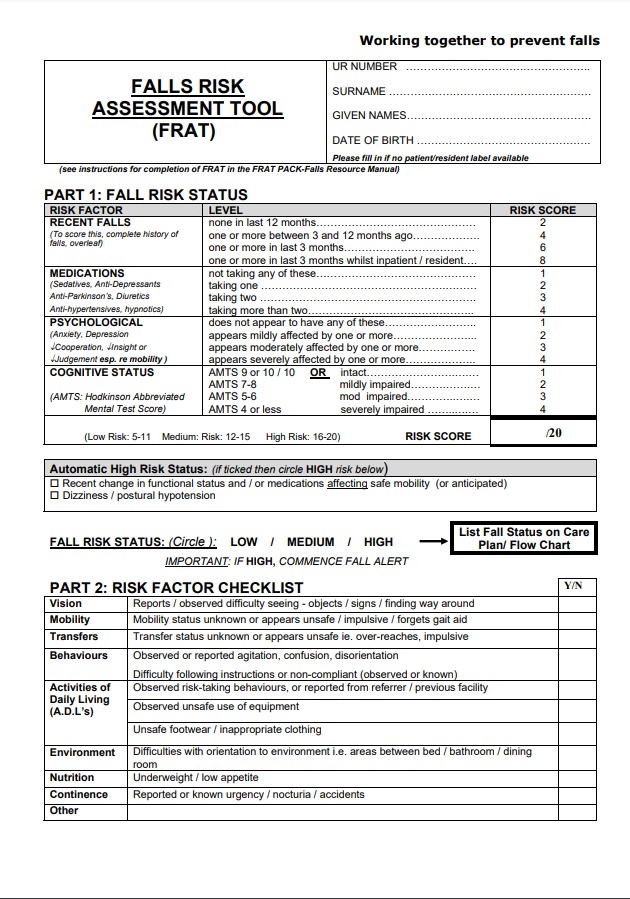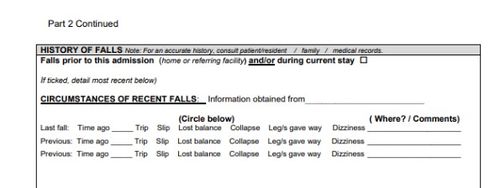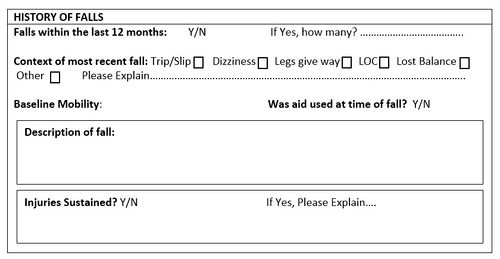Falls Risk Assessment Tool (FRAT)
Original Editor - Shaun Jackson as part of the Northumbria University Innovation and Contemporary Physiotherapy Project
Top Contributors - Kim Jackson, Shaimaa Eldib, Lucinda hampton, Vidya Acharya, Shaun Jackson and Momina Khalid
Introduction[edit | edit source]
Falls are problematic within the elderly population. Falls are the second leading cause of accidental injury deaths worldwide. Each year an estimated 684 000 individuals die from falls worldwide. Adults older than 60 years of age experience the greatest number of fatal falls.[1]
A range of tools are available to health care providers to identify those at risk of falling. Tools include: Falls Risk Assessment Tool (FRAT); Berg Balance Scale; Timed Up and Go Test (TUG); The Balance Outcome Measure for Elder Rehabilitation (BOOMER).
FRAT[edit | edit source]
It is a 4-item falls-risk screening tool for sub-acute and residential care. The FRAT has three sections:
- Part 1 - falls risk status.
- Part 2 – risk factor checklist.
- Part 3 – action plan[2].
A full copy of the FRAT tool can be accessed via the following link: [1]
Criticism of FRAT[edit | edit source]
Include:
- Risk Factor Checklist (Part 2) fails to appreciate balance specifically. If this was a self-reported concern of the patient, areas of proprioception and the vestibular system could be objectively looked at in more depth within specialist physiotherapy. assessment.
- Lacks context – eludes to being objective however fails to provide any guidance on questioning to obtain further information. Area for development – extended box to record subjective and objective measures.
- NICE guidelines state the FRAT does not assess all the risk variables highlighted in their guidelines for falls prevention. Furthermore, NICE state it should not be relied solely on to assess risk of falls and requires further investigation[3]. If high falls risk is identified, more extensive assessment is required – e.g. Elderly Mobility Scale to provide objective measures that guide physiotherapy treatment.
- Nowhere to record a collateral history. Having an area to collect information would allow for exploration into issues and areas highlighted in Part 2.
- ‘History of Falls’ section lacks ability to record detailed mechanics of fall. Tick boxes can be supported by a descriptive component. (See ‘Potential Modifications to the FRAT’).
- Cognitive test included is rather outdated and cannot be relied on to confirm cognitive impairment.
- Recommendation: carry out with several members of MDT present to incorporate areas of expertise.
Potential Modifications to the FRAT[edit | edit source]
During the process of evaluating the FRAT, there is a perceived lack of depth pertaining to the falls section. It is proposed that some amendments could be made to this in order to improve clarity and increase information and reliability.
Current ‘History of Falls’ Section:
Potential Developments:
References[edit | edit source]
- ↑ WHO Falls Available:https://www.who.int/news-room/fact-sheets/detail/falls (accessed 2.11.2022)
- ↑ Stapleton C, Hough P, Oldmeadow L, Bull K, Hill K, Greenwood K. Four‐item fall risk screening tool for subacute and residential aged care: The first step in fall prevention. Australasian Journal on Ageing. 2009 Sep;28(3):139-43.
- ↑ Centre for Clinical Practice at NICE (UK. Falls: Assessment and prevention of falls in older people. 2013.https://www.nice.org.uk/guidance/cg161










